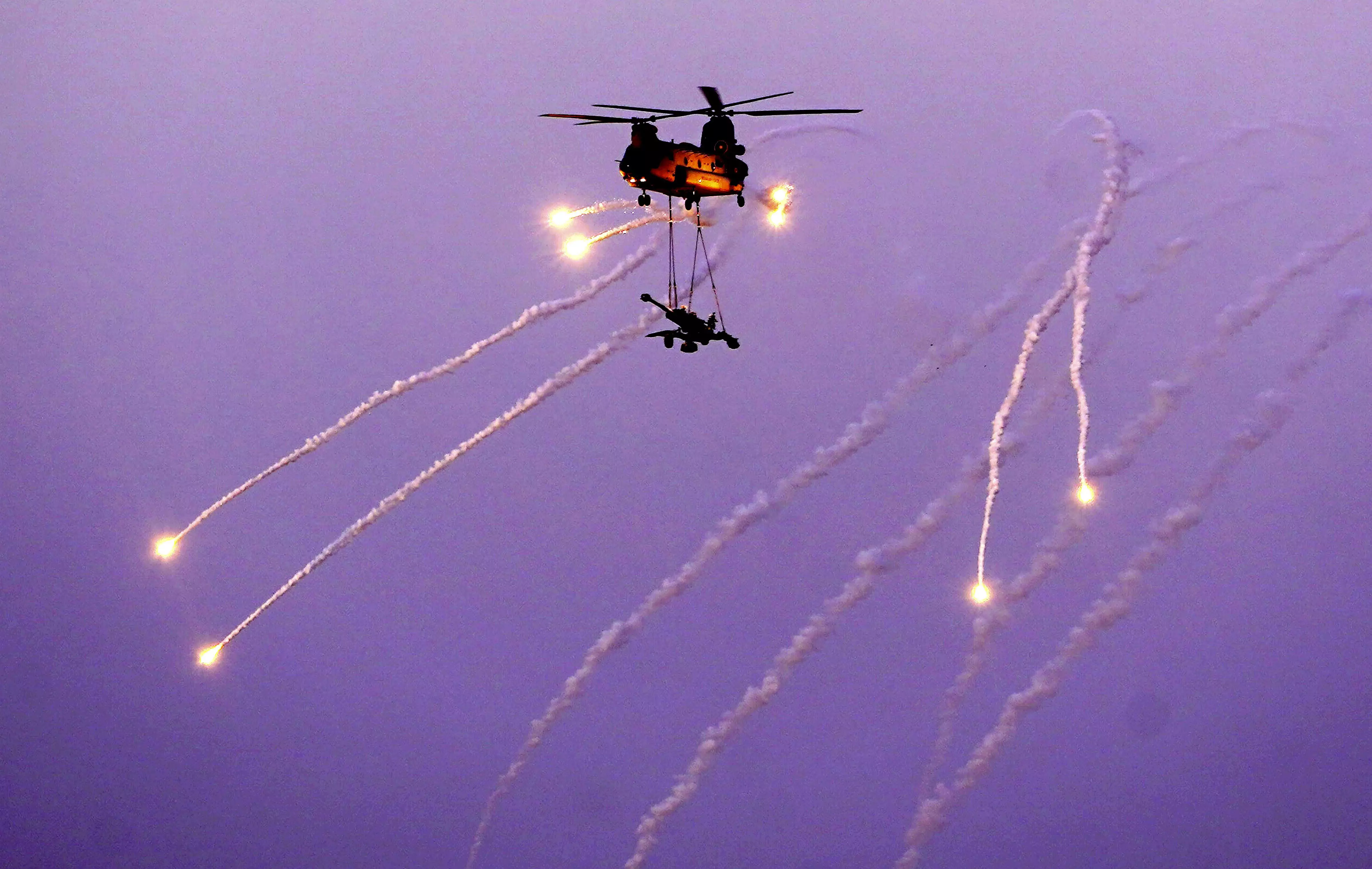Indian Air Force Displays Firepower Capabilities at Pokhran

Indian Air Force (IAF) personnel at fire-power demonstration during rehearsal for the exercise 'Vayu Shakti 2024', at the Air Force firing range at Pokhran, in Jaisalmer, Rajasthan, Wednesday, Feb. 14, 2024. (PTI Photo)
NEW DELHI: The Indian Air Force (IAF) on Saturday displayed its firepower capability at a mega exercise featuring over 120 aircraft, including frontline fighter jets and attack helicopters in Rajasthan's Pokhran desert. In the Vayu Shakti exercise, the IAF also demonstrated the capabilities of its long-range drones and air-to-air missiles as well as its increasing strength in the rapid deployment of combat assets by airlifting weapons like M-777 ultra-light howitzers and other military platforms.
In keeping with the exercise's theme 'Lightning Strike from the Sky', over 120 aircraft displayed the IAF's offensive capabilities by day as well as by night.
Fighter aircraft, including the Rafale, Su-30 MKI, MiG-29, Mirage-2000, Tejas and Hawk, attacked and destroyed simulated enemy targets on the ground and in the air with deadly precision, the IAF said.
These attacks were delivered in multiple modes and directions, employing a variety of precision-guided munitions as well as conventional bombs and rockets.
Upholding the IAF's firm commitment to 'AtmaNirbhar Bharat', the indigenously built Tejas aircraft showcased its swing-role capability and destroyed an aerial target with a missile, followed by the engagement of a ground target with bombs.
Keeping up with the technological advancements in the combat domain and the lessons learnt from recent conflicts, the IAF also displayed a long-range unmanned drone, which destroyed a simulated enemy radar site, with pinpoint accuracy.
An IAF Rafale also successfully engaged an aerial target with a beyond-visual-range air-to-air missile.
The event began with three Chetak helicopters trooping the national flag and the Air Force ensign, flying past the grandstand with the national anthem playing in the background.
It was followed by a perfectly timed 'sonic boom' created by a Rafale aircraft. Two Jaguar aircraft flying at low levels followed the Rafale, taking high-fidelity reconnaissance images of the area.
Combat support operations by transport aircraft included a containerised delivery system drop by a C-17 heavy-lift aircraft and an assault landing by a C-130J carrying IAF special forces, the Garuds, the IAF said in a statement.
The Apache attack helicopter demonstrated its firepower in this event for the first time, by engaging targets with air-to-ground guided missiles, while Mi-17 helicopters engaged ground targets with rockets.
Joint operations included the IAF and the Army's weaponised version of the advanced light helicopters Mk-IV devastating simulated enemy targets using their rockets and swivel guns.
As another first, IAF Chinook helicopters demonstrated rapid deployment of combat assets by airlifting the Indian Army's M-777 Ultra-Light Howitzers in an underslung mode enabling prompt destruction of simulated enemy targets on the ground.
As the sun set on the horizon, Garuds inserted by Mi-17 helicopters carried out an 'Urban Intervention', demonstrating their prowess in anti-terror operations aimed at clearing hideouts of inimical elements.
The indigenous air defence systems, Akash and SAMAR, were also showcased, destroying multiple aerial targets.
Night events displayed for the first time the capabilities of the indigenous Light Combat Helicopter 'Prachand' wherein it neutralised designated targets with rockets.
It was followed by a Jaguar and Su-30 MKI dropping heavy calibre and area weapons at night showcasing the strategic bombing capability of the IAF.
Remotely piloted aircraft carried out the bomb damage assessment of all targets that was live-streamed to the operations centre and the audience.
Chief of Defence Staff, Gen Anil Chauhan witnessed the exercise.
( Source : PTI )
Next Story
